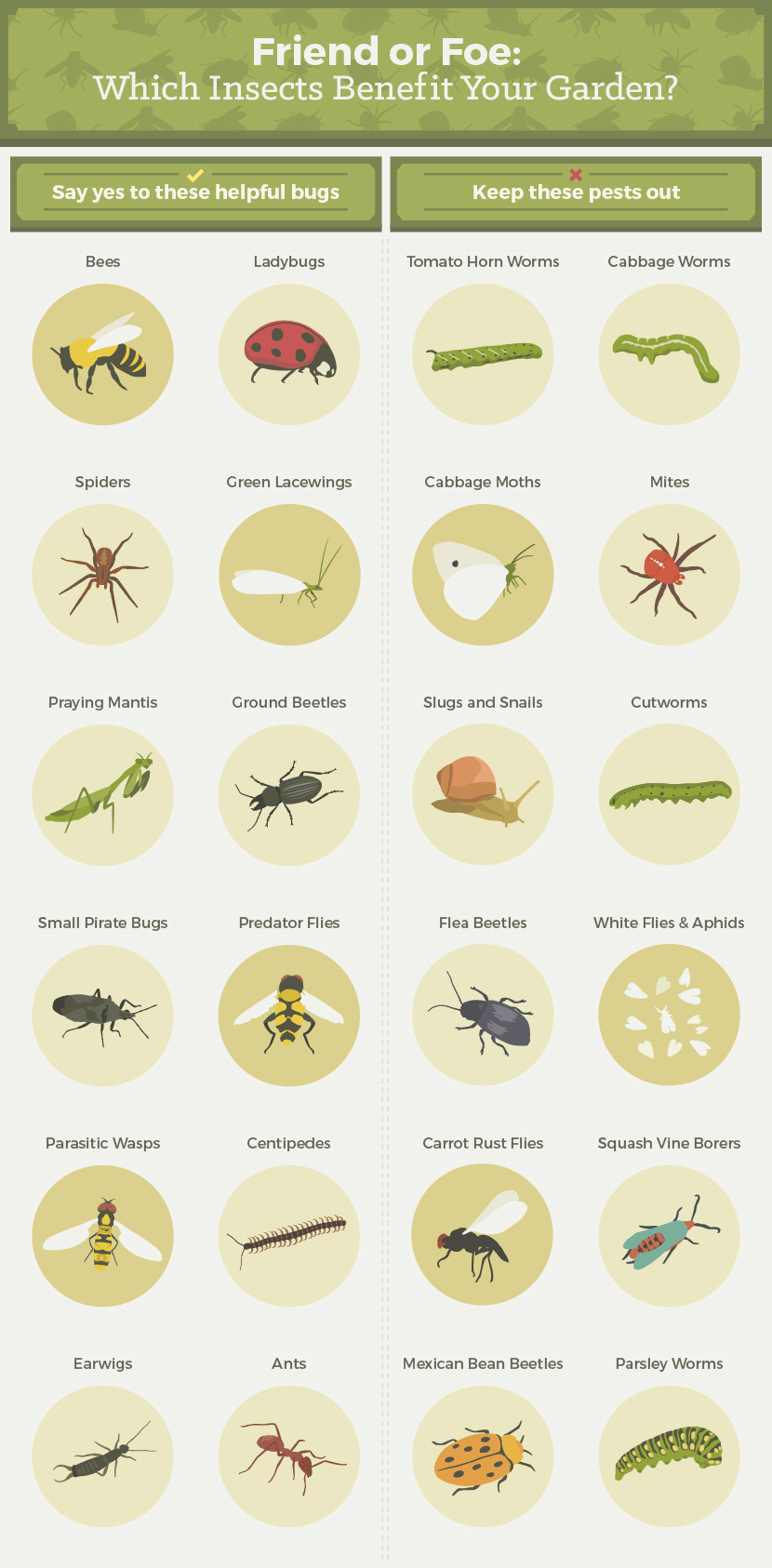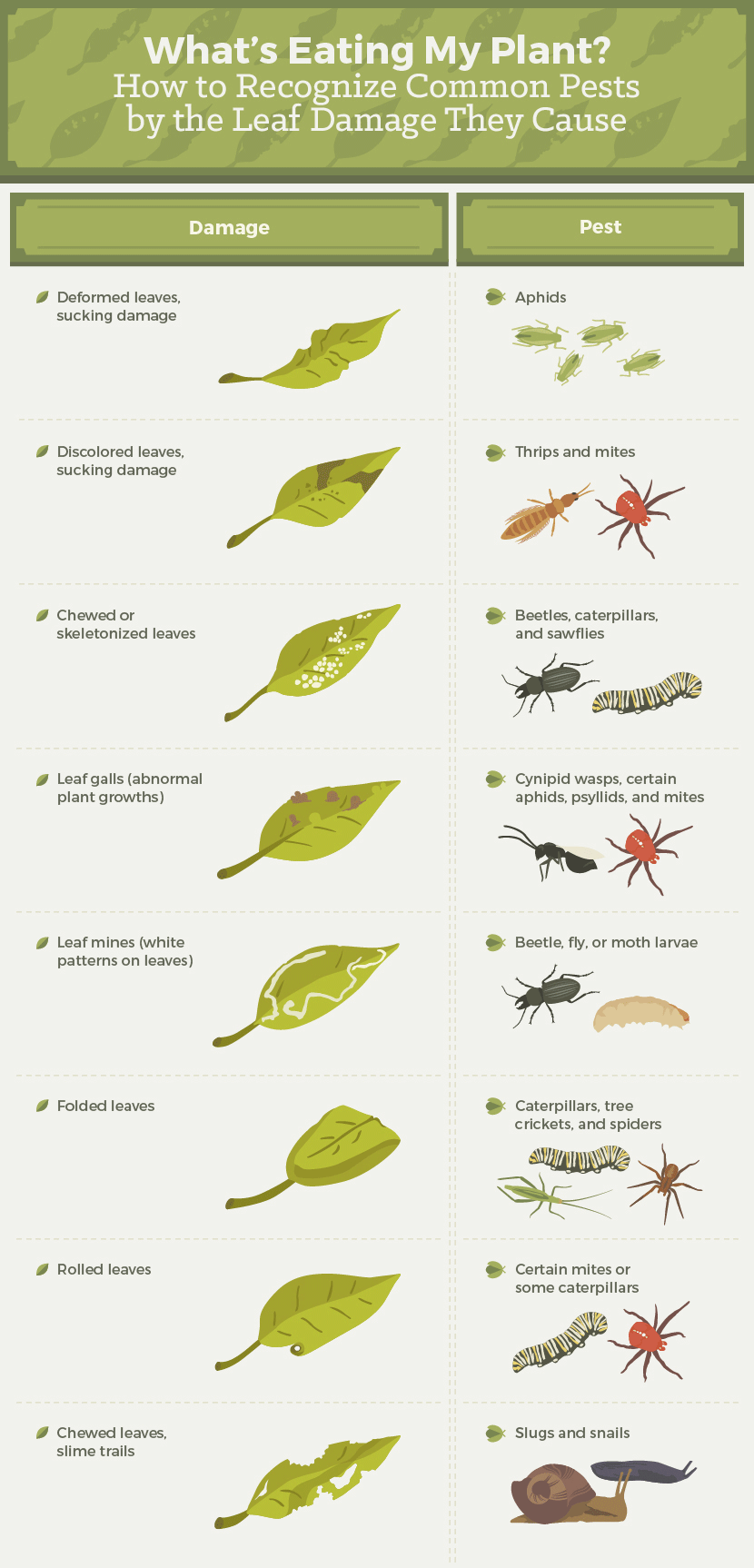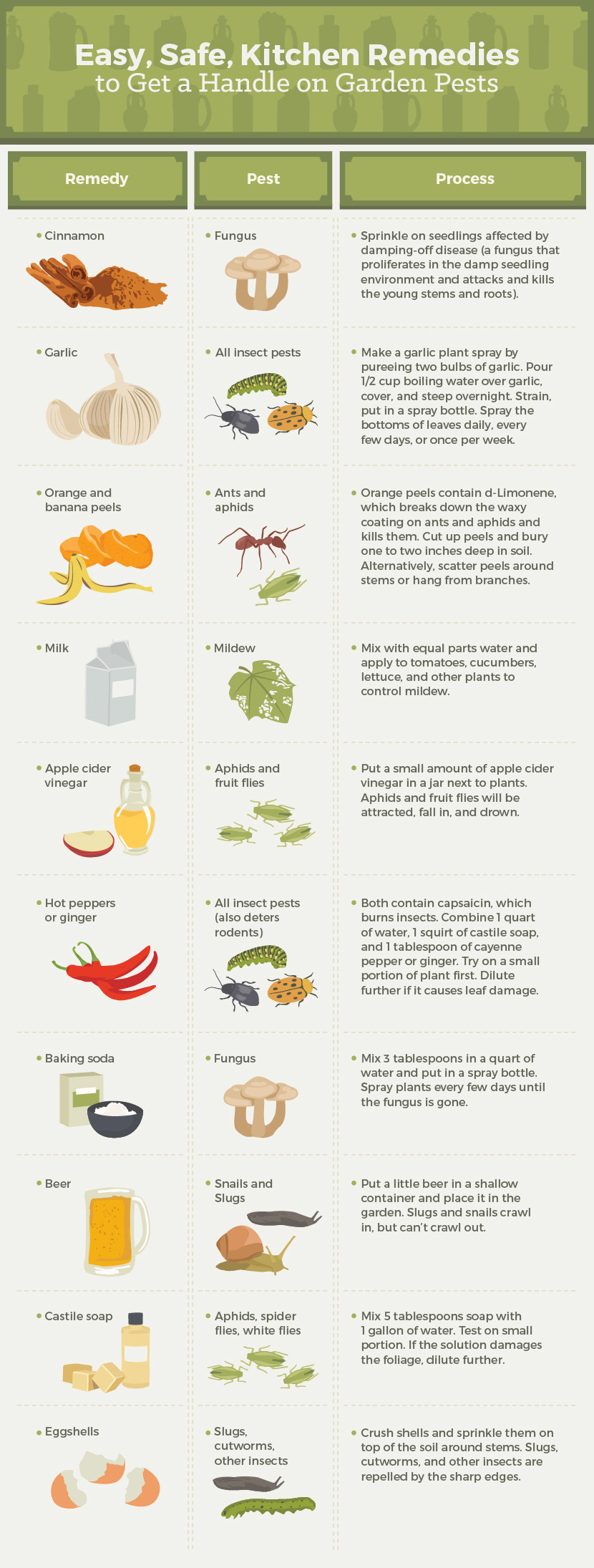-
- Jul 10
-
pestcontrol

- 0
Getting Rid of Garden Pests
It probably won’t surprise most vegetable gardeners that insects outnumber humans many millions of times over. While some insects can be beneficial for certain plants, gardeners are all too familiar with the destruction of many tiny crawly critters.
Fortunately, nature offers plenty of non-toxic ways to discourage and manage detrimental insects. The following six steps can help a gardener reduce pest problems without toxic chemicals. Remember: Prevention is always the first and best line of attack.
1. Build Healthy Soil
Soil supplies the nutrients, water, oxygen, and root support that plants need to thrive. Research shows that the healthier the soil, the better plants are able to withstand pest attacks.1 Building healthy, fertile, living soil is the most important way to prevent pest problems.
Build healthy soil with these five practices:
• Limit Soil Disturbance
A growing body of research suggests that routinely turning the soil has various drawbacks.2 It leaves the soil surface bare, encourages runoff, causes soil compaction and erosion, and harms soil microbes and earthworms.3 Keeping disturbance to a minimum preserves the living systems in soil. Instead, layer amendments on top, and let the earthworms aerate the soil.• Compost
Start a compost bin, and add one to two inches of well-decomposed compost to the garden each spring to supplement nutrition in the soil and encourage a desirable soil structure.• Mulch
Add two to four inches of grass clippings or mowed leaves to the garden when plants are about four inches high to reduce water evaporation, suppress weeds, moderate soil temperature, prevent soil compaction, and add slowly-decomposing organic matter to the soil.• Rotate crops
Crop yields decrease when plants are repeatedly sown in the same beds. That’s partly because soil-dwelling pest populations, such as grubs, wireworms, and maggots, increase. Plan to rotate plant families to new beds each season to keep pests on the run.• Plant cover crops
At the end of the growing season, plant a cover crop, such as ryegrass, peas, or clover, to enhance the soil’s fertility, lessen erosion over winter months, suppress weeds, and improve the soil structure. In spring, cover the crop with mulch or allow chickens to graze.2. Attract Beneficial Predators
Remember, not all bugs are bad. Many actually help plants grow by pollinating, decomposing waste, and gobbling up pests. The trick is to know which bugs benefit your plants and which can become a problem.
In general, keep the garden as diversified as possible and encourage year-round blooming to attract varying types of beneficial insects. The following plants are particularly attractive to the predators that help control pest populations:4
• Native flowering plants, especially those with daisy-shape blooms
• Tansy
• Fennel
• Mint
• Carrots
• Dill
• Sweet alyssum
• Marigolds
• Parsley
• Coriander
• Zinnia3. Monitor the Garden
The truth is, every gardener will share some harvest with pests. Even in a garden with healthy soil that is buzzing with beneficial insects, it’s a good idea to closely monitor crops for pest damage. Be sure to check the undersides of leaves, where bugs hide and leave egg sacs.
4. Decide Whether to Tolerate or Take Action
If pest damage is minimal, organic gardeners may simply want to tolerate pests, since any pest control can also harm beneficial pollinators and predators.
It’s usually safe to eat slightly damaged produce, so long as you follow these rules of thumb:5
• Toss anything that’s been munched on by rodents or raccoons.
• Toss anything that an animal has defecated on.
• Toss any leaves that have a squiggly white decoration. It’s caused by leaf miners, which are still inside the leaves.
• It’s generally safe to eat produce that has a few holes or has been nibbled on by insects. Cut off damaged areas and enjoy the rest.If pest damage is too high to tolerate, start with the least invasive control method.
5. Mechanical Pest Solutions
These hands-on techniques use simple equipment, devices, or natural ingredients to provide a protective barrier between plants and insects. Although the devices or ingredients may seem non-toxic and harmless, many can injure or harm bees and other beneficial bugs. It’s always important to be selective.
• Barriers
Nets, fences, and paper collars keep bugs and other animals away from plants. Floating row covers – transparent plastic or fabric covers that let sunshine in – keep beetles, flea beetles, and many other pests at bay. Barriers can prevent pollination, so row covers and nets should be raised while flowers are blooming.
• Handpicking
Plucking pests and egg sacks off plants by hand is an effective and non-toxic way to control them, although it can be labor-intensive.
• Traps
Mechanical traps lure pests away from plants, allowing them to be removed from the garden. Various traps can be purchased at garden stores or made at home. Build your own slug and snail trap by nailing strips of wood on a board. Place it in the garden, with the strips down, so the board is slightly propped off the ground. Slugs and snails will climb under it and can be easily escorted away from the garden.
• Water Pressure Sprays
A forceful stream of water dislodges aphids and spider mites, but the process must be repeated regularly. Only use on sturdy plants, and allow plants to dry between sprays to prevent disease caused by over-watering.
• Insect Vacuums
Handheld, battery-powered vacuums can be used to remove bugs from plants. Shake the plant and vacuum the pests that fall or fly off.
• Food Grade Diatomaceous Earth
Diatomaceous earth, a powder made from fossilized aquatic organisms, penetrates the exoskeleton of bugs, dehydrating and killing them. Sprinkle it around the stems of plants to keep crawling pests away. It is safe for humans and pets, although it should not be breathed in. It only works when dry, so reapply after rain and watering. Diatomaceous earth kills both pests and beneficial insects.
• Insecticidal Soap
Spraying diluted soap on plants can deter a number of pests. Use a natural soap with no detergent or additives, such as castile soap. Try 5 tablespoons of soap per gallon of water and test on a small portion of the plant. If the spray causes leaf damage, dilute further. Soap kills both pests and beneficial insects.
• Horticultural Oils
Horticultural oils are petroleum- or plant-based oils mixed with emulsifiers so they can be added to water and sprayed on plants. They smother and poison scale, aphids, mites, and other soft-bodied insects. Horticultural oils kill both pests and beneficial insects.
6. Chemical Cures
If all else fails, it may be time to try an organic pesticide. Use only chemicals approved by the USDA for use by organic growers, and use them selectively. Start with the least toxic and most specific remedy first, and apply it in the evening when bees are least active.
The Xerces Society for Invertebrate Conservation offers these guidelines on the organic mechanical and chemical pesticides that are safest for bees:6
Non-Toxic
-
- Bacillus thuringiensis
- Garlic
- Kaolin clay
- Corn gluten
- Gibberellic acid
Moderately Toxic
-
- Boric acid
- Neem
- Ryania
- Adjuvants
- Horticultural vinegar
- Copper
- Lime sulfur and sulfur
Highly Toxic
- Diatomaceous earth
- Insecticidal soap and oil
- Pyrethrins
- Rotenone
- Sabadilla
- Spinosad
- Copper sulfate
Kitchen Remedies for Garden Pests
Some effective pest remedies can be found in the kitchen. Always test homemade remedies on a small portion of the plant to make sure they will not harm it, and never apply on a hot or bright sunny day, which could cause plants to burn.
By building healthy soil, welcoming beneficial insects, establishing a pest tolerance level, and selectively managing pests that can’t be tolerated, gardeners create a productive and beautiful ecosystem that is safe for all creatures.





